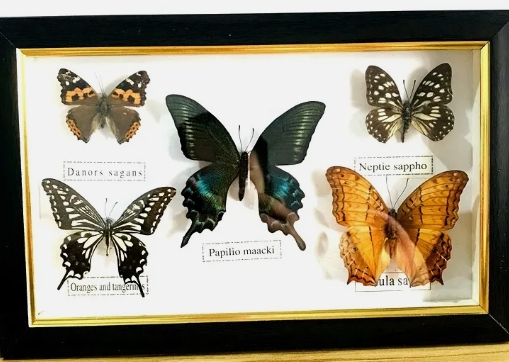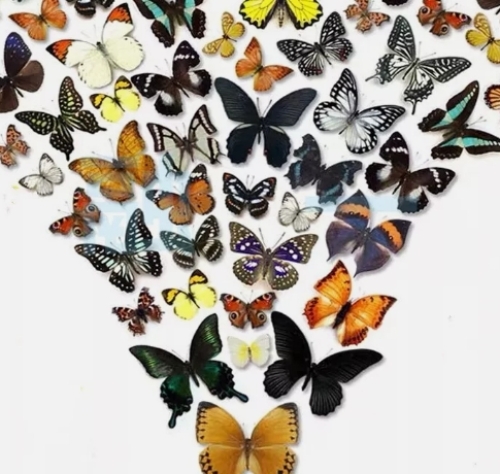Butterfly specimens are a special category of insect specimens that are widely used in scientific research, education, and collecting. Butterfly specimens, through careful collection and treatment, show the beauty and diversity of butterflies, and also provide valuable data for biological research.
The process of preparing butterfly specimens includes collection, handling and preservation. First, butterflies are usually caught in their natural habitat using insect nets. During collection, researchers record detailed collection information, including location, time, and environmental conditions. This information is important for subsequent research.
After collection, the butterflies need to be fixed and dried. Fixation involves placing butterflies in a solution containing formaldehyde or alcohol to prevent spoilage. Next, the butterfly is placed on a special specimen frame and its wings and legs are adjusted to ensure its natural posture. During the drying process, the butterfly's wings need to be carefully unfolded to maintain their intact structure and color.
The dried butterfly is placed in a dust-proof display box. Display boxes are usually equipped with labels to record butterfly species, collect information and other relevant data. These specimens not only help scientists study the taxonomy and ecology of butterflies, but also provide viewing and learning opportunities for nature lovers and educators.
The beauty and diversity of butterfly specimens make them occupy a unique place among insect specimens, showing us the wonder and richness of nature.














